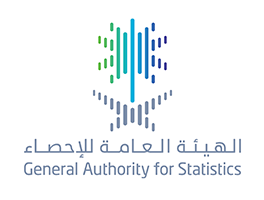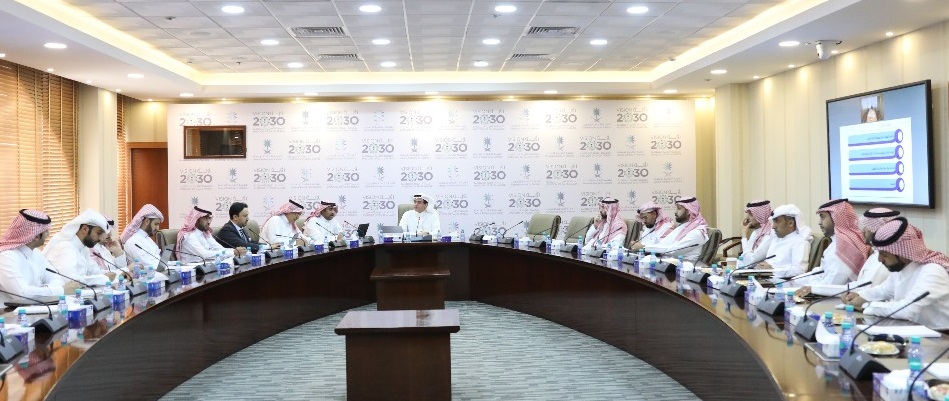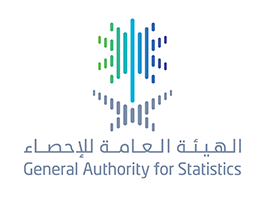
الهيئة العامة للإحصاء تصدر تقرير نتائج مسح صحة الأسرة 2017م
Containing more than 85 Indicators of Household Health in the Kingdom
GASTAT Releases the Results of the Household Health Survey 2017
On Thursday, Dhu al-Qidah 13th, 1439H. (Corresponding to July 26th, 2018) the General Authority for Statistics (GASTAT) released the results of the Household Survey (2017) on its official website (www.stats.gov.sa) as part of the results of the new surveys issued by GASTAT. This survey is the first survey in the field of household health, which was carried out during the period from (21/2/1439H. to 15/3/1439H.) corresponding to (10/11/2017 to 3/12/2017). It is one of the most important sources of data needed for development planning in the health and social fields at the national level. The bulletin includes more than 85 indicators on health and social phenomena and on family health in the Kingdom.
The results showed that 94.2% of the population at the age group (15 years and above) have good or very good health according to their personal assessment of their health. Regarding Saudi population, the percentage of Saudi males who have good or very good health reached 93.5%, whereas the Saudi females reached 91.7%. The results also showed that 25.4% of the population at the age group (15 years and above) undergo a periodic medical check-up to check their health at least once a year. While the percentage of population who are covered by a health insurance reached 37.1% of total population, 13.9% of them are Saudis and 75.4% are non-Saudis.
The results also showed that the percentage of population who suffer from chronic diseases diagnosed by a doctor at the age group (65 years and above) is the highest for both males and females. The percentage in this group is 73.8% for females compared to 67.8% for males. The percentage of population who have been diagnosed with diabetes by a doctor reached 8.5% of the Kingdom population, the males diagnosed with diabetes reached 8.7% and 8.3% for females. The percentage of Saudi population who have been diagnosed with diabetes reached 10.1%, 10.4% for Saudi males and 9.8% for Saudi females.
The percentage of population (15 years and above) who have been diagnosed with cancer disease reached 0.17%, whereas the percentage of population (15 years and above) who have been diagnosed with cardiovascular diseases reached 1.14%. The results of the survey also showed that the total fertility of Saudi females reached 2.35%, while the total fertility rate in the Kingdom is (2) births per one woman in the Kingdom. The percentage of births performed by specialized doctors was 99.7%.
It is worth mentioning that this survey was conducted in accordance with the international standards recognized by the World Health Organization and the United Nations. The results will enable specialists to study many health phenomena, extract many indicators related to health in the Kingdom, as well as maternal and child indicators, and indicators about health lifestyle in the community. It also provides data about smoking, the size of accident injuries, as well as the study of marriage, family planning, fertility and child mortality. For comparison purposes and in order to unify the statistical method and style in the implementation of the household health surveys, all 13 regions of the Kingdom were covered through a representative sample of households.

فرق عمل "اللجنة التنسيقية للهيئة العامة للإحصاء" تبحث طرق تبادل البيانات بين الجهات الحكومية
With the participation of 31 government entities over a period of 5 days
The Task Teams of the (Coordination Committee of the General Authority for Statistics) discuss ways of exchanging data between government entities
Within the framework of the General Authority for Statistics' efforts to facilitate and exchange data and information with various government agencies, the coordination committee meetings of the Coordination Committee of the General Authority for Statistics took place during the five days from July 1st to 5th , 2018, with the participation of 31 government entities.
The official spokesman of the General Authority for Statistics, Tayseer Al-Mufrrej, explained that the coordination teams discussed several topics, including the discussion of the general frameworks for the coordination work between the various entities in the joint works. They also reviewed the challenges and obstacles facing the task teams and discussed the appropriate solutions. In addition, they reviewed the statistical work carried out during the last period. The government agencies also made a number of development proposals for data dissemination and raising statistical awareness, in addition to data exchange.
On the other hand, Mr. Al-Mufrrej said that the Coordination Committee of the General Authority for Statistics includes a number of coordination teams, including the coordination Task team for Economic Statistics, which includes, the Ministry of Economy and Planning, the Ministry of Health, the General Authority for Sport, the Ministry of Trade and Investment, the Ministry of Labor and Social Development , Ministry of Energy, Industry and Mineral Resources, Ministry of Finance, Council of Saudi Chambers, Saudi Customs, General Authority for Investment, Saudi Arabian Monetary Agency, General Authority for Tourism and National Heritage, and Small and Medium Enterprises Authority.
The coordination task team on Environment Statistics includes: The Ministry of Municipal and Rural Affairs, the Ministry of Environment, Water and Agriculture, the General Authority for Meteorology and Environmental Protection, Saline water conversion Corporation and the Royal Commission for Jubail and Yanbu.
The coordination task team on Energy Statistics includes: The Ministry of Energy, Industry and Mineral Resources, the Saline Water Conversion Corporation, King Abdullah City for Atomic and Renewable Energy, the Ministry of Energy's National Renewable Energy Program, the Royal Commission for Jubail and Yanbu and the Electricity & Co-Generation Regulatory Authority.
The coordination task team of Masdar program includes: The Ministry of Health, Ministry of Housing, Ministry of Commerce and Investment, Ministry of Education, Ministry of Municipal and Rural Affairs, Ministry of Environment, Water and Agriculture, Ministry of Civil Service, Saudi Arabian Monetary Agency, General Organization for Social Insurance , The Public Pension Agency , the General Auditing Bureau, the Yesr Program, the National Information Center of the Ministry of the Interior, the Ministry of Justice, the Ministry of Economy and Planning, the Ministry of Finance and the Ministry of Labor and Social Development.
While the coordination task team of the social statistics includes: The Ministry of Justice, the Ministry of Housing, the Ministry of Labor and Social Development, the Ministry of Health, the Ministry of Municipal and Rural Affairs, the Public Prosecution, the Ministry of the Interior, the Ministry of Civil Service, the Ministry of Education and the Saudi Post.
It is worth mentioning that the meetings were held as preparatory meetings for the meeting of the Coordination Committee of the General Authority for Statistics, which will be held on the tenth of next September. The "Coordination Committee" was formed permanently to coordinate the statistical work between the General Authority for Statistics and related entities, in accordance with the decision of the Council of Ministers (11) dated 13/1/1437 AH on the organization of the Commission, aimed at activating and organizing the statistical work through the establishment of a comprehensive, accurate and unified statistical system, in addition to the follow-up of its implementation. It also develops the plans and programs necessary to meet statistical needs; in order to serve the developmental plans, scientific research, and various activities.

الهيئة العامة للإحصاء: ارتفاع في مُعدَّل المشاركة الاقتصادية للسعوديين، و (6.1٪) مُعدَّل بطالة إجمالي السكان، وبطالة السعوديين: (12.9٪)
A decline in the numbers of non-Saudi workers by more than 234 thousand during Quarter 1, 2018
GASTAT: Saudis economic participation rate increased, total population unemployment rate is (6.1%), and Saudis unemployment rate is (12.9%)
The General Authority for Statistics (GASTAT) published on its official website www.stats.gov.sa the Labor Market Bulletin for the first quarter of 2018, which provides comprehensive data and indicators on the labor market in Saudi Arabia from the estimates of the labor force survey conducted by GASTAT quarterly, in addition to the labor market data from the administrative records of some relevant entities (Ministry of Labor and Social Development, Ministry of Civil Service, General Organization for Social Insurance, Human Resources Development Fund and National Information Center).
The results of the bulletin for the first quarter of 2018 indicated that the total number of workers from the data of administrative records in Saudi Arabia (Q1, 2018) reached (13,333,513) individuals, compared to (13,581,141) individuals in Q4, 2017. However, the first quarter of 2018 witnessed a decrease in the numbers of non-Saudi workers by (234,191) individuals compared to the fourth quarter of 2017, as they registered (10,183,104) individuals in Q1, 2018 compared to (10,417,295) in Q4, 2017. On the other hand, the numbers of Saudi workers registered (3,150,409) individuals.
As for the rate of population’s economic participation (15 years and older), it recorded (55.5%) in Q1, 2018 compared to (55.6%) in Q4, 2017. However, the economic participation rate of Saudis increased by (41.89%) compared to (41.86%) in the previous quarter. Saudi males’ economic participation (15 years and older) increased by (63.5%) compared to (63.4%) in the previous quarter, whereas Saudi females’ economic participation (15 years and older) increased by (19.5%) compared to (19.4%) last quarter.
The results also showed that the rate of population’s unemployment (15 years and older) reached (6.1%) during the first quarter of 2018 compared to (6.0%) in Q4, 2017. Saudis unemployment rate (15 years and older) registered (12.9%) in the first quarter of 2018, but the Saudi females’ unemployment rate has decreased during this quarter registering (30.9%) compared to (31.10%) in Q4, 2017. In contrast, Saudi males’ unemployment rate registered an increase with (7.6%) compared to (7.5%) in Q4, 2017.
In addition, the total number of Saudi jobseekers from the estimates of administrative records (Jadarah, Sa’ed, and Hafiz programs) reached (1,072,162) individuals during the first quarter of 2018 compared to (1,086,561) individuals with a decline by (14,399) individuals from last quarter. Saudi male job seekers recorded (16.1%), while female jobseekers recorded (83.9%).
The bulletin included a large number of detailed data on workers according to the regulations they are subject to, and according to the nationality, gender, age, administrative region and educational level, as well as data on job seekers, average monthly wage, working hours and domestic workers.
On the other hand, GASTAT spokesman Mr. Taiseer Almofarrej, clarified that there is a difference between job seekers and unemployed. The "unemployed" according to the Labor Force Survey are the individuals (15 years and older) who were jobless during the period of the time reference (the survey period): the previous week of the household visit and have been looking for a job seriously during the four weeks prior to the household visit (they have at least taken one way to look for a job). This includes those who did not search for work during the four weeks prior to the household visit because they were waiting for a job or starting their own business in the coming period, where they had already been looking for work before the time reference period and at the same time they were able to work and were ready to join it (If available), during the week preceding the household visit.
Additionally, the definition of job seekers is the Saudi individuals (males or females) enrolled in the job search programs of the Ministry of Civil Service (Jadarah or Sa’ed) and the Human Resources Development Fund (Hafiz). And they register their personal data, qualifications, practical experiences and CVs through an electronic system.
It is worth to mention that job seekers in the administrative records are not subject to the internationally recognized standards and conditions of unemployment approved by the ILO and therefore are not considered to be unemployed. Hence, not every job seeker is considered unemployed, s/he may be looking for work and is working in another job, this is the case in job seekers in government entities who are working, for example, in the private sector.

الهيئة العامة للإحصاء تُجري 5 أعمال إحصائية ميدانية الأسبوع المقبل
Targeting more than 35,000 households and 53,000 Establishments
The General Authority for Statistics is conducting 5 field statistical works next week
The General Authority for Statistics (GASTAT) has invited all citizens and residents, as individuals or in corporations, to cooperate with the statisticians working in the field in various regions of the Kingdom of Saudi Arabia, who their statistical work will start next Tuesday Shawwal 26th,1439AH (July 10th, 2018). GASTAT asserted that all information and data given by citizens, residents and corporations is confidential and will be treated as an information basis which is reliable and can be used by development decision-makers in all relevant government entities that will serve the interest of citizens and residents.
GASTAT spokesman, Mr. Taiseer Almofarrej said that more than (1600) statisticians are conducting 5 social and economic statistical surveys during this period until Dhu Al-Qidah 20th, 1439 AH (August 2nd, 2018). These statistical works are targeting more than 35,000 households and 53,000 establishments in all (13) administrative regions. He mentioned that the field surveys of the economic indicators are used by the decision makers who are involved in the unemployment issue and increasing the employment in the internal trade activity. In addition, the recent statistical data contribute to the knowledge of the volume of internal trade activity and the measurement of its contribution to GDP. He pointed out that the Labor Force Survey helps to extract real indicators and data on unemployment, workers and the economic participation in the Kingdom, as well as data on labor force for the population (15 years old and above). This survey is one of the household field surveys based on a sample, conducted by GASTAT in the field of social statistics. He added that these data are important in terms of giving a picture of the size of the labor force among the working age population of male and female, active and economically inactive.
Mr. Almofarrej mentioned that the field surveys that will be conducted by GASTAT next week by statisticians who are holding official ID cards includes: Industrial Production Survey (3rd quarter, 2018), Economic Indicators Survey (3rd quarter, 2018), Internal Trade Activity Survey (3rd quarter, 2018), Construction Activity Survey 2018, and Tourism Survey 2018.
